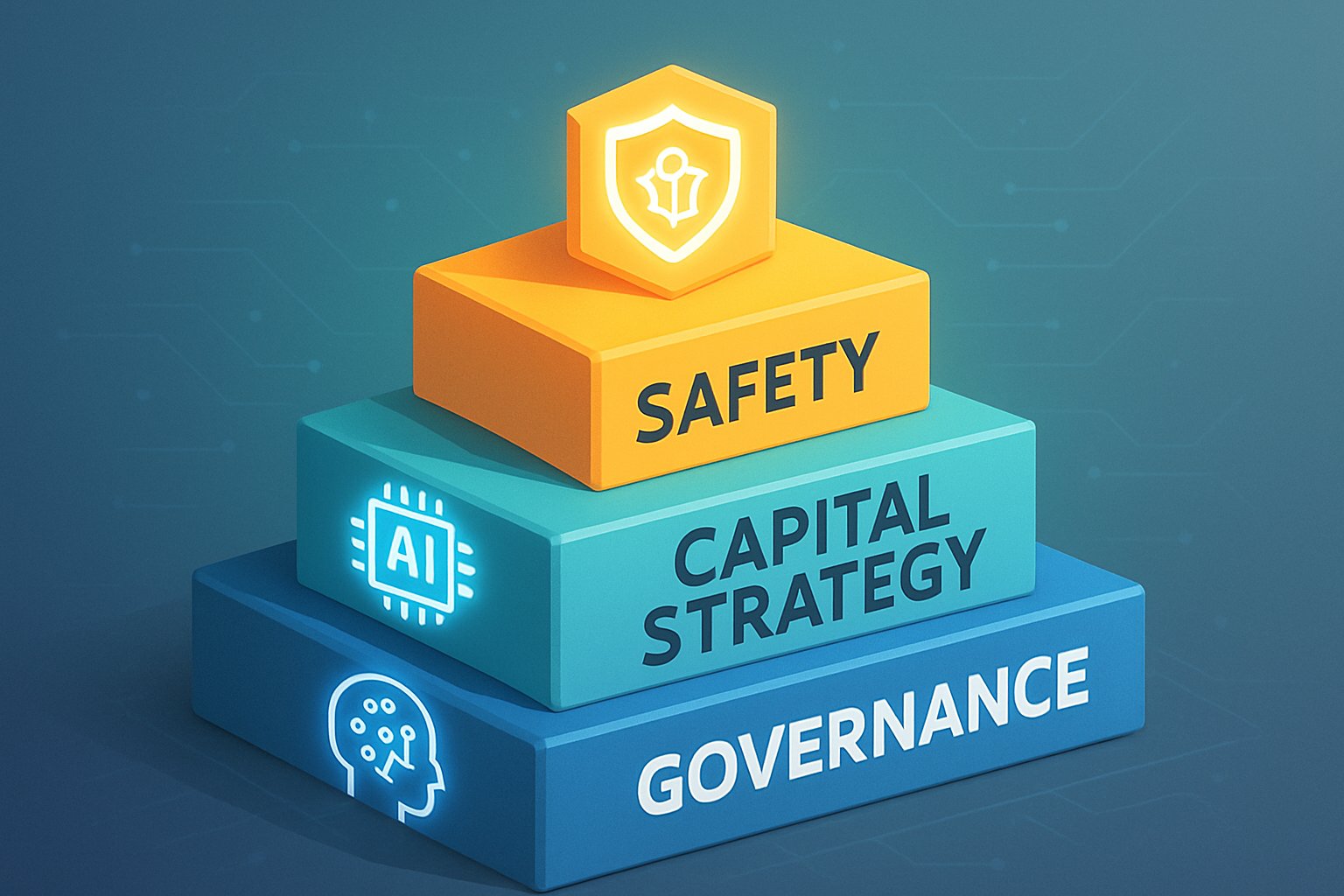
AI CERTS
2 days ago
OpenAI’s organizational structure reform reshapes AI governance
Moreover, Microsoft secured a 27% stake, while the nonprofit OpenAI Foundation retains decisive control. The California and Delaware attorneys general approved the deal, but only after extracting rigorous concessions. Among them are formal safety committees, transparent reporting, and the ability to pause risky deployments. Meanwhile, critics still question whether any safeguards can withstand investor pressure. This article dissects the redesigned governance, examines monetary flows, and highlights unresolved tensions.
Organizational Structure Reform Path
OpenAI rebuilt its hierarchy through the October transaction. Consequently, the nonprofit OpenAI Foundation now owns Class N shares with veto rights. This organizational structure reform places mission first while still courting colossal investment. Furthermore, the model introduces an independent oversight board embedded in the nonprofit charter. The body can exercise deployment delay/halt authority when models present unacceptable risk.

Stakeholders describe the framework as hybrid. In contrast, earlier drafts lacked clear public accountability. Therefore, observers welcomed binding documents filed with California and Delaware regulators. Nevertheless, skeptics doubt whether contractual language will survive future board disputes. This section highlights why clarity on control remains central. The next part turns to capital mechanics.
Capital And Control Dynamics
Microsoft invested fresh capital alongside earlier supporters. Moreover, SoftBank signaled further contributions pending product milestones. The recapitalization reclassifies shares to enable capped-profit payouts for early employees and investors. Consequently, large gains remain possible without dissolving nonprofit primacy. This organizational structure reform also directs 26% equity, worth about $130 billion, to the Foundation.
Meanwhile, the independent oversight board retains appointment authority over most PBC directors. Additionally, Class N shares block hostile amendments. Observers suggest that this mix of voting rights and capped-profit payouts tempers divergent incentives. However, future fundraising rounds could stress the delicate balance. The following section reviews formal safety levers.
Safety Governance Powers Detailed
OpenAI codified multiple safety checkpoints. Firstly, the nonprofit Safety & Security Committee oversees every release cycle. Moreover, the committee can trigger deployment delay/halt authority when risks exceed set thresholds. This permission is contractually enforceable, according to the California MOU. Therefore, executives cannot overrule safety experts unilaterally.
Secondly, an AGI verification panel will evaluate any claim of reaching artificial general intelligence. Additionally, progress cannot proceed to public launch until the panel signs off. The independent oversight board receives panel findings within 24 hours, ensuring transparency. Furthermore, the organizational structure reform links compensation to panel clearance, not revenue alone.
Finally, regulators demanded public audits. Consequently, OpenAI must summarize safety actions in annual reports. The AGI verification panel can request extra disclosure, and the committee still retains deployment delay/halt authority for emergent threats. These powers form the backbone of technical risk management. Next, we examine broader oversight mechanisms.
Independent Oversight Mechanics Today
California’s MOU elevates the independent oversight board from advisory status to fiduciary muscle. Moreover, board members hold observation rights at every PBC meeting. They can circulate minority reports when management diverges from mission. In contrast, most technology giants lack any comparable watchdog.
Additionally, regulators imposed 21-day notice for charter amendments. Therefore, attorneys general can intervene before safeguards erode. The AGI verification panel must also inform state offices if thresholds are breached. This organizational structure reform intertwines corporate changes with public supervision.
Nevertheless, enforcement depends on people. Successors may respect, weaken, or ignore processes. Consequently, journalists and civil society must track compliance. The next section explores how investors could reshape incentives.
Investor Stakes And Risks
Investors now hold eye-watering paper gains. Microsoft alone could realize multibillion returns if valuations persist. However, capped-profit payouts limit upside beyond predefined multiples. Such caps were designed to maintain mission purity while rewarding early risk.
Furthermore, SoftBank, venture funds, and staff share similar terms. Consequently, capped-profit payouts motivate performance yet restrain speculative behavior. This organizational structure reform thereby harmonizes financial and ethical goals.
Nevertheless, investor blocs can still pressure directors. In contrast, the independent oversight board may refuse unsafe launches. The question is whether economic gravity overpowers safety calculus. Our next section looks toward future scenarios.
Future Strategic Implications Map
Frontier model training costs continue climbing. Therefore, additional capital raises seem inevitable. The organizational structure reform should accommodate new money without diluting mission stock, yet negotiations may be fierce.
Meanwhile, the AGI verification panel will face unprecedented technical challenges. Additionally, adversarial evidence could emerge from external labs. Should disagreements arise, deployment delay/halt authority offers a critical pause button.
Consequently, policymakers worldwide will watch the experiment closely. In contrast, rival firms may adopt lighter oversight. Success here could establish a template for responsible scale. The final section distills practical insights.
Actionable Takeaways Certifications Guide
Professionals monitoring governance reforms should focus on measurable signals. Moreover, ongoing transparency reports will reveal whether promises hold.
- Annual filings detail oversight board activity.
- Mission reports quantify deployment delay/halt authority usage.
- Cap table updates disclose capped-profit payouts status.
- Safety briefs summarize AGI verification panel conclusions.
- Regulatory notices flag organizational structure reform amendments.
Additionally, leaders can deepen expertise through the AI Ethics Strategist™ program. The curriculum explores profit caps and emergency deployment brakes.
This organizational structure reform offers a living laboratory for aligning profit and safety. Consequently, tracking its evolution prepares stakeholders for similar transformations elsewhere.
OpenAI’s hybrid governance now sets the benchmark for high-stakes AI stewardship. Nevertheless, money, law, and mission will continue to collide. The nonprofit still commands Class N levers, while investors eye huge exits. Furthermore, formal safety triggers, including a dedicated verification panel, empower experts to halt reckless moves. Critics remain unconvinced, arguing that independent oversight needs teeth, not paperwork. Consequently, vigilant monitoring from regulators and journalists will determine whether ambitions match reality. Professionals seeking to contribute can build policy fluency today. Therefore, explore the linked certification and stay current on board filings, audit reports, and public disclosures.



